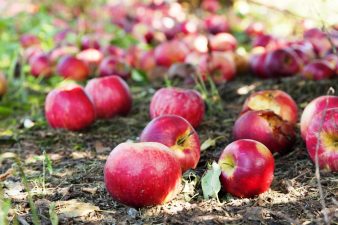An antiquities excavation in the Holy Land near Tel Aviv has yielded evidence of ancient farms.
Along with the likelihood that the people in the area north of Tel Aviv practiced regenerative organic agriculture, the people back then were farmers with culture!
“We discovered a large winepress paved with a mosaic as well as plastered installations and the foundations of a large structure that may have been used as a warehouse or even a farmstead,” says Dr. Yoav Arbel, Director of the excavation. “Inside the buildings and installations, we found many fragments of storage jars and cooking pots that were evidently used by laborers working in the fields here.

“We also recovered stone mortars and millstones that were used to grind wheat and barley and probably also to crush herbs and medicinal plants. Most of the stone implements are made of basalt from the Golan Heights and Galilee.”
One of the rare and unexpected finds retrieved from the excavation is a gold coin, minted in 638 or 639 CE by the Byzantine emperor Heraclius. On one side, the emperor is depicted with his two sons and the reverse shows a cross on the hill of Golgotha where, according to Christian tradition, Jesus was crucified. Looking back in history is easier today but back then all we had was the archeology record. Many ancestry coupons are available for people who want to trace where they came from.
An interesting addition to the coin is an inscription scratched in Greek, and possibly also in Arabic. This is probably the name of the coin’s owner, who ‘marked’ it as highly valuable property.

Another unusual find is a bronze chain that was used to suspend a chandelier containing glass lamp holders. Chandeliers of this type are usually found in churches.
Installations built at the site after the Muslim conquest in the seventh century CE include a glass-making workshop and a warehouse, where four massive jars were found.
The jars, which were sunk into the floor, were evidently used to store grain and other products as a precaution against pests and damp conditions. “In this period, people were not only working at the site but also living there, because we discovered the remains of houses and two large baking ovens,” says Arbel.
The pottery from this period includes complete pottery lamps for lighting, and local and imported serving ware, some of it decorated. Based on the assemblage of finds, the site continued to be inhabited until the eleventh century Common Era.




